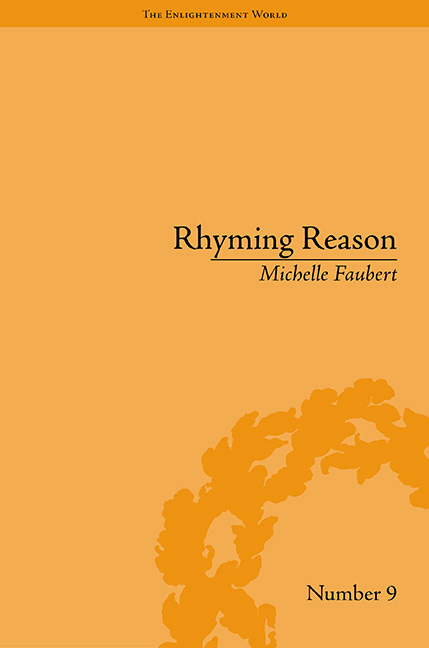Book contents
- Frontmatter
- CONTENTS
- Dedication
- Acknowledgements
- Preface: Psychologist-Poets, Disciplinary Power and the Modern Subject
- Introduction: Romantic-Era Psychologist-Poets and the Historical Context of Early British Psychology
- 1 Erasmus Darwin, James Beattie and Nathaniel Cotton as Pre-Romantic Psychologist-Poets
- 2 The Human Touch: Thomas Bakewell, Andrew Duncan Sr, John Ferriar and Moral Management
- 3 Thomas Trotter, William Perfect and Thomas Beddoes: Nervous Illness and Social Hygiene
- 4 The Unelected Legislator: Associationism and Thomas Brown's Subliminal Poetic Lessons
- Conclusion: Thomas Forster, Phrenology and the Reification of the Disciplines
- Notes
- Works Cited
- Index
Conclusion: Thomas Forster, Phrenology and the Reification of the Disciplines
- Frontmatter
- CONTENTS
- Dedication
- Acknowledgements
- Preface: Psychologist-Poets, Disciplinary Power and the Modern Subject
- Introduction: Romantic-Era Psychologist-Poets and the Historical Context of Early British Psychology
- 1 Erasmus Darwin, James Beattie and Nathaniel Cotton as Pre-Romantic Psychologist-Poets
- 2 The Human Touch: Thomas Bakewell, Andrew Duncan Sr, John Ferriar and Moral Management
- 3 Thomas Trotter, William Perfect and Thomas Beddoes: Nervous Illness and Social Hygiene
- 4 The Unelected Legislator: Associationism and Thomas Brown's Subliminal Poetic Lessons
- Conclusion: Thomas Forster, Phrenology and the Reification of the Disciplines
- Notes
- Works Cited
- Index
Summary
I. Phrenology, Cranial Bumps and the Text of the Soul
When — — is drunken, and talks like a fool,
‘Tis not at all strange; for by a known rule,
(As people of learning will judge of a book,
If but at its title and index they look,)
You may swear by his forehead, his mouth, nose, and chin,
That if he was sober, he's no sense within.
The above poem by Bakewell about the features of a face as expressive of a person's inner character introduces the topic of phrenology, which, in turn, concludes this study in several important ways. I contend that phrenology is exemplary of psychology's tendency to define subjectivity in external terms, a process that unites all of the various psychological approaches I have been describing throughout this study and, as such, all of the discrete arguments I have developed in each chapter, as well. I will show that phrenology, especially as expressed in the verse and prose of Thomas Forster (1789–1860), defined the subject through its discourse in an ineluctable way that positioned the phrenologist as the master of the subject's personal identity and the subject as utterly circumscribed by disciplinary power.
As the science of reading cranial bumps and facial features as an index to personal identity, phrenology was ‘designed to reveal the inner man from outer signs’. The ‘more empirical offspring’ of the physiognomy of Johann Caspar Lavater (1741–1801), which studied the whole body to discover how the psychological and spiritual make-up of the subject expressed itself in the body, phrenology focused more specifically on the head and less stringently on the role of the spirit in forming the outer person. These distinguishing characteristics gave the approach the reputation of being overly positivistic and deterministic. Lavater's student, Franz Joseph Gall (1758–1828), broke away from his teacher in order to focus on the head and lectured and published around Europe and the United States with a student of his own, Johann Gaspar Spurzheim (1776– 1832).
- Type
- Chapter
- Information
- Rhyming ReasonThe Poetry of Romantic-Era Psychologists, pp. 183 - 198Publisher: Pickering & ChattoFirst published in: 2014



